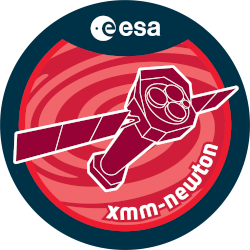

| Proposal ID | 006494 |
| Title | XMM Study of the 401Hz Accreting Pulsar SAX J1808.4-3658 in Quiescence |
| Download Data Associated to the proposal | https://nxsa.esac.esa.int/nxsa-sl/servlet/data-action-aio?obsno=0064940101 |
| DOI | https://doi.org/10.5270/esa-uyxc8iy |
| Principal Investigator, PI | Dr Luigi Stella |
| Abstract | We propose to carry out the first detailed study of the quiescent state of 401Hz pulsar in the soft X-ray transient SAX J1808.4-3658. A recent BeppoSAX observation has detected the source at a quiescent level of 10+33 ergs s-1. The proposed observations will address a number of crucial issues that this unique source can help answering with unprecedented accuracy. These include: (i) the characteristics and origin of the quiescent X-ray emission; (ii) the presence of coherent pulsations in the quiescent state; (iii) the physical regime that characterises the quiescent state, i.e. the propeller vs radio pulsar regime, the possible r^ance of the neutron star cooling, the presence of an ADAF. The XMM instrumentation is ideally suited for this a study. |
| Publications |
|
| Instrument | EMOS1, EMOS2, EPN, OM, RGS1, RGS2 |
| Temporal Coverage | 2001-03-24T00:02:53Z/2001-03-24T11:01:42Z |
| Version | 17.56_20190403_1200 |
| Mission Description | The European Space Agencys (ESA) X-ray Multi-Mirror Mission (XMM-Newton) was launched by an Ariane 504 on December 10th 1999. XMM-Newton is ESAs second cornerstone of the Horizon 2000 Science Programme. It carries 3 high throughput X-ray telescopes with an unprecedented effective area, and an optical monitor, the first flown on a X-ray observatory. The large collecting area and ability to make long uninterrupted exposures provide highly sensitive observations. Since Earths atmosphere blocks out all X-rays, only a telescope in space can detect and study celestial X-ray sources. The XMM-Newton mission is helping scientists to solve a number of cosmic mysteries, ranging from the enigmatic black holes to the origins of the Universe itself. Observing time on XMM-Newton is being made available to the scientific community, applying for observational periods on a competitive basis. |
| Creator Contact | https://www.cosmos.esa.int/web/xmm-newton/xmm-newton-helpdesk |
| Date Published | 2002-06-11T00:00:00Z |
| Last Update | 2025-08-04 |
| Keywords | "XMM", "quiescent xray emission", "xmm instrumentation", "quiescent level", "BeppoSAX", "neutron star cooling", "J1808.4", "coherent pulsations", "physical regime", "radio pulsar regime", "401hz pulsar" |
| Publisher And Registrant | European Space Agency |
| Credit Guidelines | European Space Agency, Dr Luigi Stella, 2002, 'XMM Study of the 401Hz Accreting Pulsar SAX J1808.4-3658 in Quiescence', 17.56_20190403_1200, European Space Agency, https://doi.org/10.5270/esa-uyxc8iy |